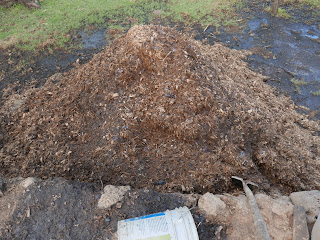Honest, hard-working, no-bullshit passionate people. They make fantastic juice, and they give a fuck about it. This is their pride and joy and it's about continuing their legacy passed down and providing for their family and community rather than profit and distribution. Quality matters here.....
It's a tiny industry here, with very little support from the CRM and to be honest not a lot of knowledge across the globe of this volcanic rock laden agave landscape.
Bildo Saravia had shot me a message and invited me to come check out his new palenque at Rancho El Ojo, and to be honest at first i was a little sceptical. But after travelling around Durango with him, and seeing his passion for helping to build the industry here and support all the local mezcaleros my eyes were opened, and the project he is working on is pretty fuckin exciting.
We visited a number of spots around Nombre de Dios and tasted some damn delicious juice. Here is a round up of the palenques, production techniques and hazily scribbled tasting notes (These can be difficult when your tasting vessel is a 5L Flagon)
Rancho El Ojo
Situated on a huge section of land around 45 mins drive from Durango Centro, this is a new palenque in an area abundantly rich in Wild Cenizo agaves. The Maestro Mezcalero here is Don Nacho, a 4th generation Mezcalero from Matatlan. He brings Oaxacan ways to the Durango region and is one of a few guys i saw to be using underground pits and tahonas in the region.

Ferment: Open and wild ferment in wood with fibres.
Situated on a huge section of land around 45 mins drive from Durango Centro, this is a new palenque in an area abundantly rich in Wild Cenizo agaves. The Maestro Mezcalero here is Don Nacho, a 4th generation Mezcalero from Matatlan. He brings Oaxacan ways to the Durango region and is one of a few guys i saw to be using underground pits and tahonas in the region.
Still under construction when we arrived and putting out the first run through the stills the palenque is definitely a work in progress.
The Facts
Cooking: Underground conical pit with volcanic rocks.
Extraction: Tahona (shipped from Oaxaca) by mule.

Ferment: Open and wild ferment in wood with fibres.
Distillation: Double distillation in wood fired copper stills (200L), first distillation with fibres.(Note: Don Nacho seals the stills with maseca, same mix as he uses to make tortillas, thats's bad ass and I've never seen it before)
The Juice: Only getting the opportunity to taste the first run of ordinario, I'll have to wait for the first shipment to give you full tasting notes, but on tasting the low wines, they show great tropical fruit, refined smoke and defined spice. Can't wait for the final juice!
Compare this to another Palenque in a small pueblo 30 mins drive from Nombre de Dios, with Maestro Mezcalero Brijido Soto.
In this village we see coffin style fermentation and crushing in the vessel via mallet (a style of production very typical of Durango) a wooden montera head of the still with copper elements.
Same agave, different terroir, totally different process.
Ferment: Coffin style cement fermentation vats with fibres, crushed by mat or mallet done by hand. 5-7 days completely wild ferment with fibres.
Distillation: Twice distilled, first run with bagasso in wood fired earth and wooden still, copper condensing arm (not in photo)
Spent bagasso from first distillation, used to feed cattle.
The bottling "warehouse" next to the Maestro Brijido's bedroom.
Tasting: Packing a high ABV and little resting, this mezcal comes in hot with smoked peppers and cloves, giving way to some sweetness and vanilla with lingering smokey bacon like flavours. Big robust flavours and an awesome savoury finish. The 5L Flagon we filled up didn't last long. Two totally different mescals 30 mins from each other, different in process, terroir and result. Fuckin ay. If you haven't tried mezcales from Durango you fuckin need to. So much going on up there, we even got our hands on a Sotol which uses Nopal leaves in the final distillation in a Pechuga-esque twist. Damn spicy, damn good.
Enough rambling, let's raise a glass to Durango!
Dixebee!!!!
Gracias y agavesueños!!
Reece



















